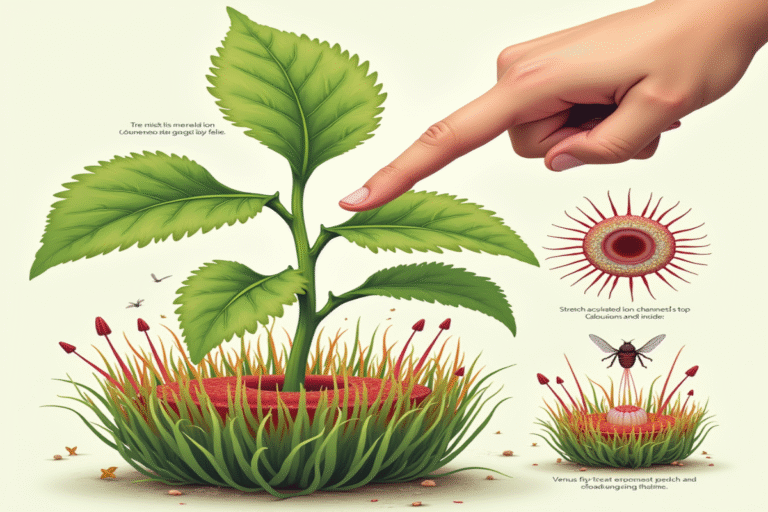Have you ever brushed against a Sensitive Plant (Mimosa pudica) and watched in amazement as its leaves rapidly fold in response to your touch? Or perhaps you’ve seen videos of the Venus flytrap snapping shut on an unsuspecting insect? These dramatic reactions reveal something extraordinary: plants can sense touch, despite lacking brains or nerves.
The Untold Sensing Abilities of Plants
While animals rely on neurons and complex nervous systems to perceive their environment, plants have evolved entirely different mechanisms to detect and respond to physical contact. This ability, known scientifically as thigmomorphogenesis, allows plants to adapt to their surroundings in ways once thought impossible for “simple” organisms.
What’s particularly fascinating is that these touch responses aren’t just reflexes—they are part of a sophisticated sensory system that helps plants survive and thrive. From protecting against herbivores to finding support structures to climb, touch sensitivity is crucial to plant life.
How Do Plants “Feel” Without Nerves?
At the cellular level, plants possess specialized structures called mechanoreceptors that detect physical disturbances. When you touch a plant, you deform cell walls and membranes, creating tiny changes in pressure that these mechanoreceptors detect.
The main players in plant touch perception include:
- Stretch-activated ion channels – proteins in cell membranes that open when the membrane is stretched, allowing calcium ions to flow into the cell
- Integrin-like proteins – molecules that help connect the cell membrane to the cell wall, allowing force to be relayed across the cell’s structure





